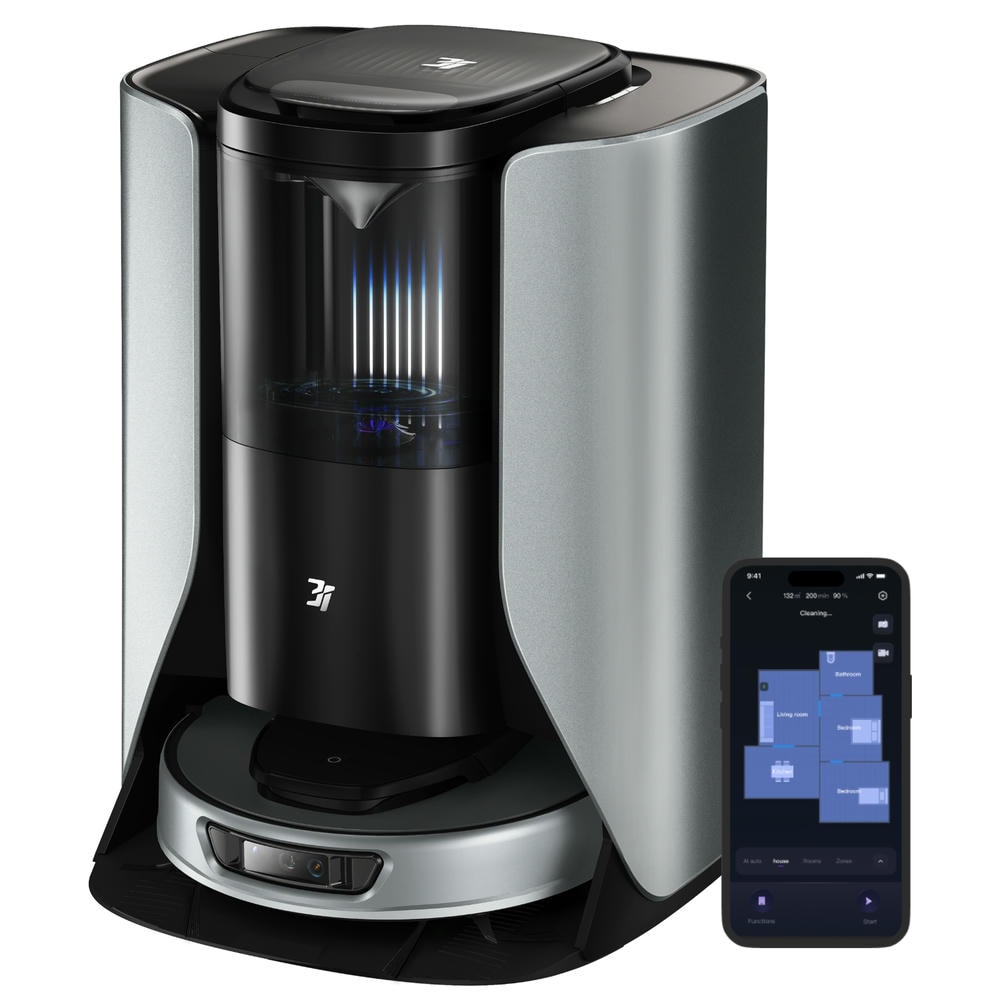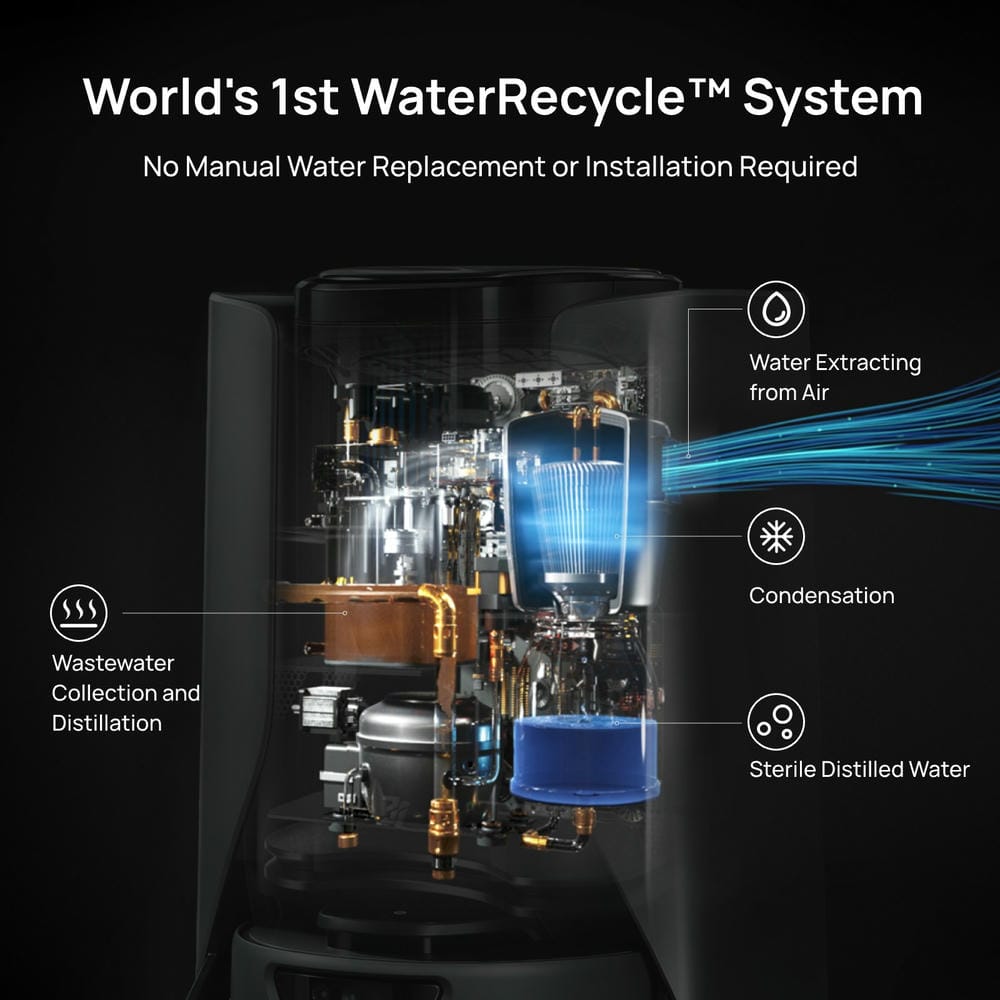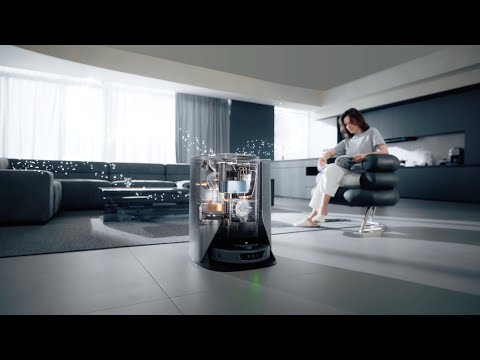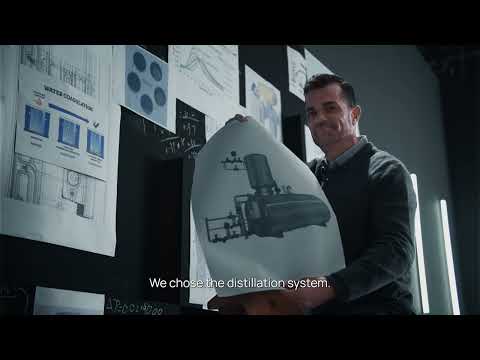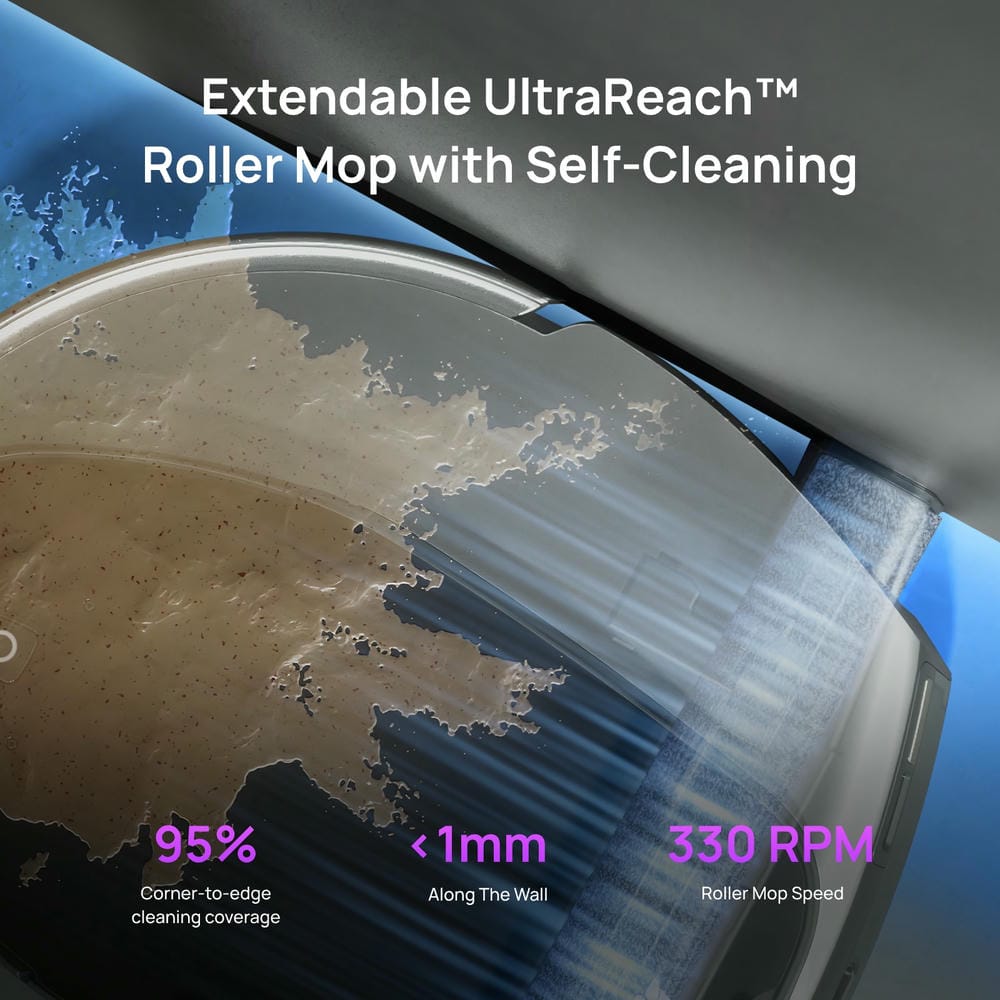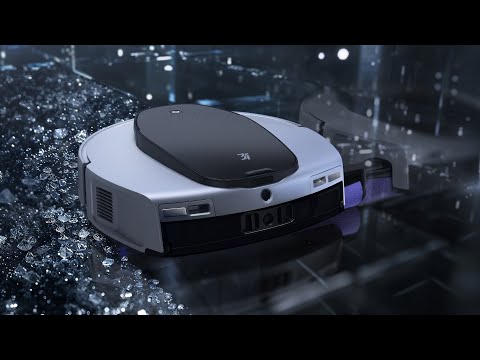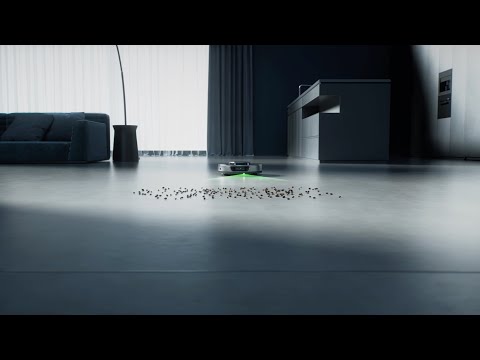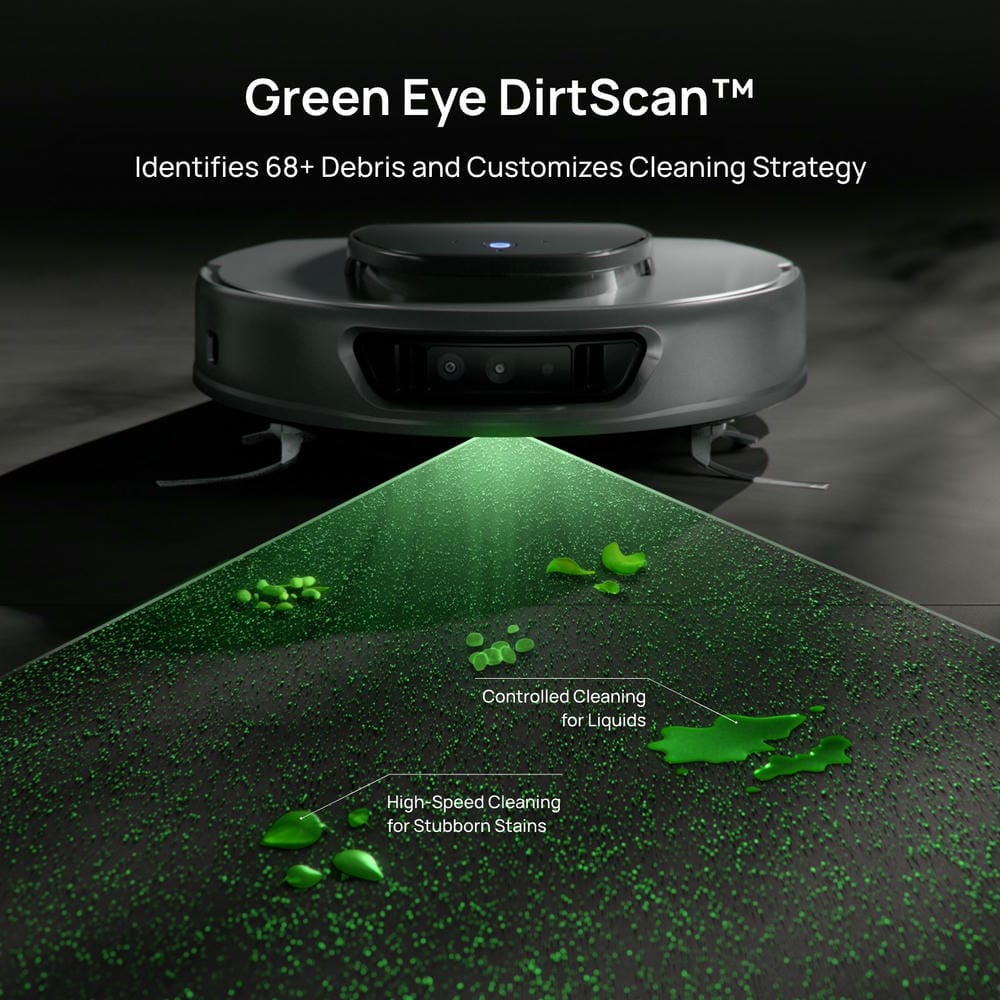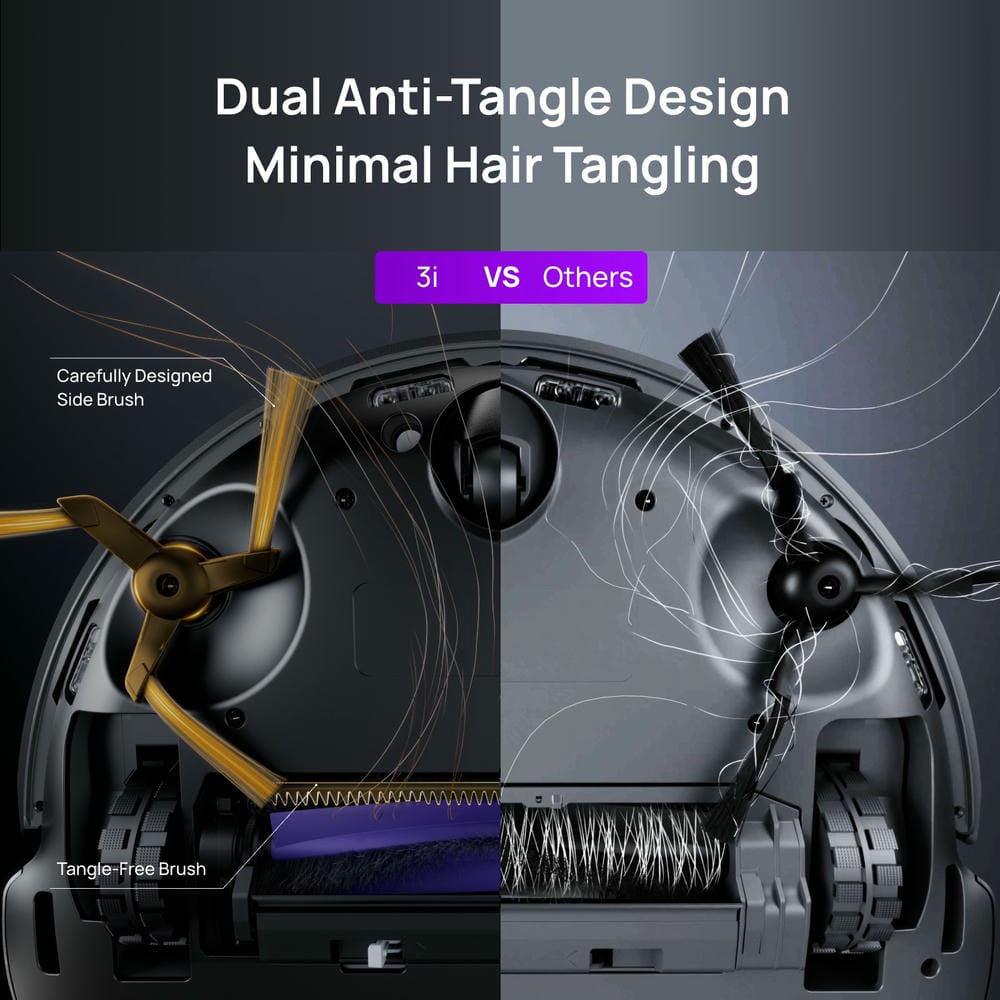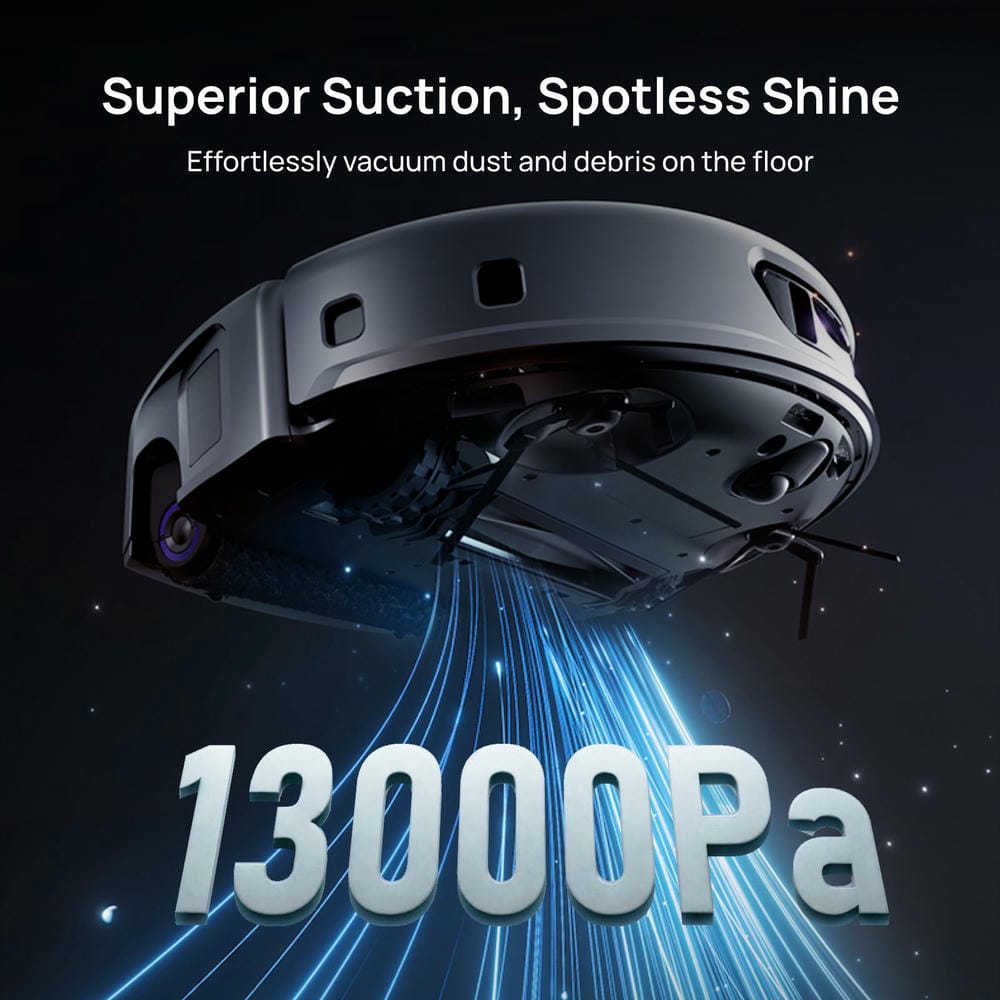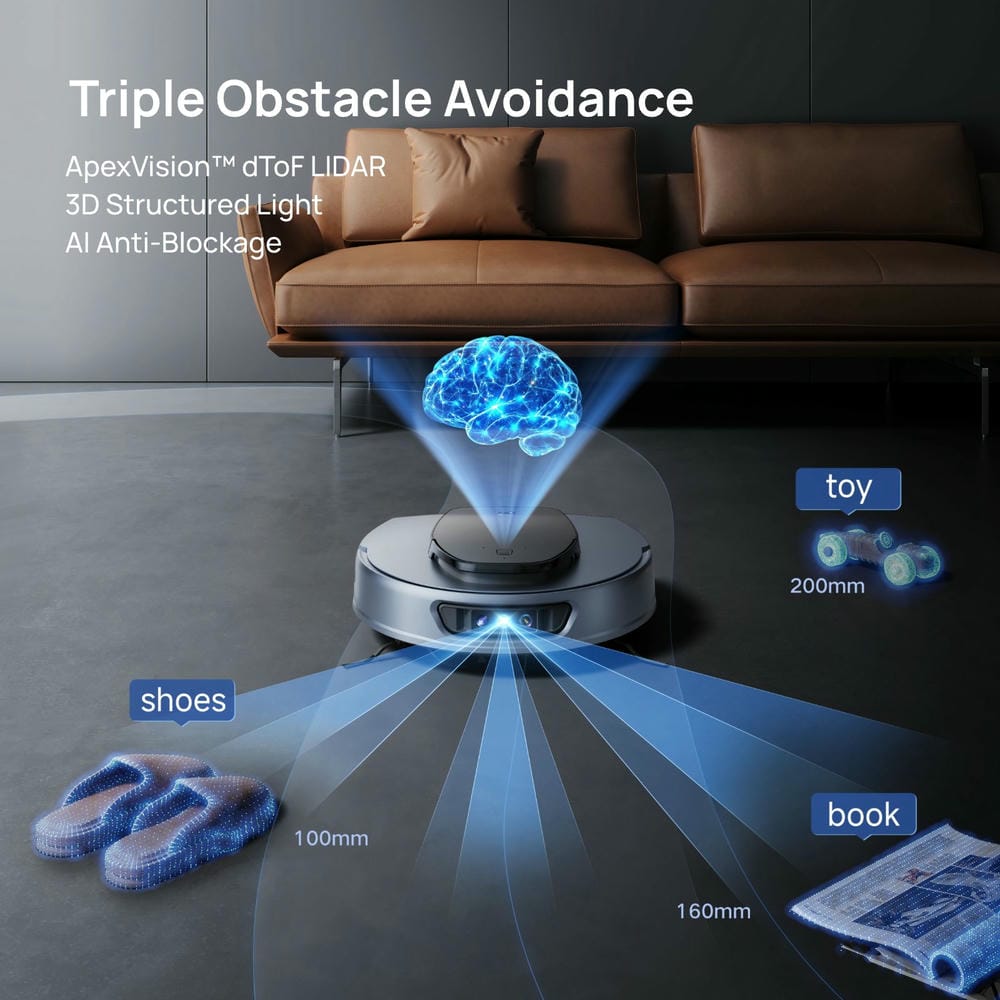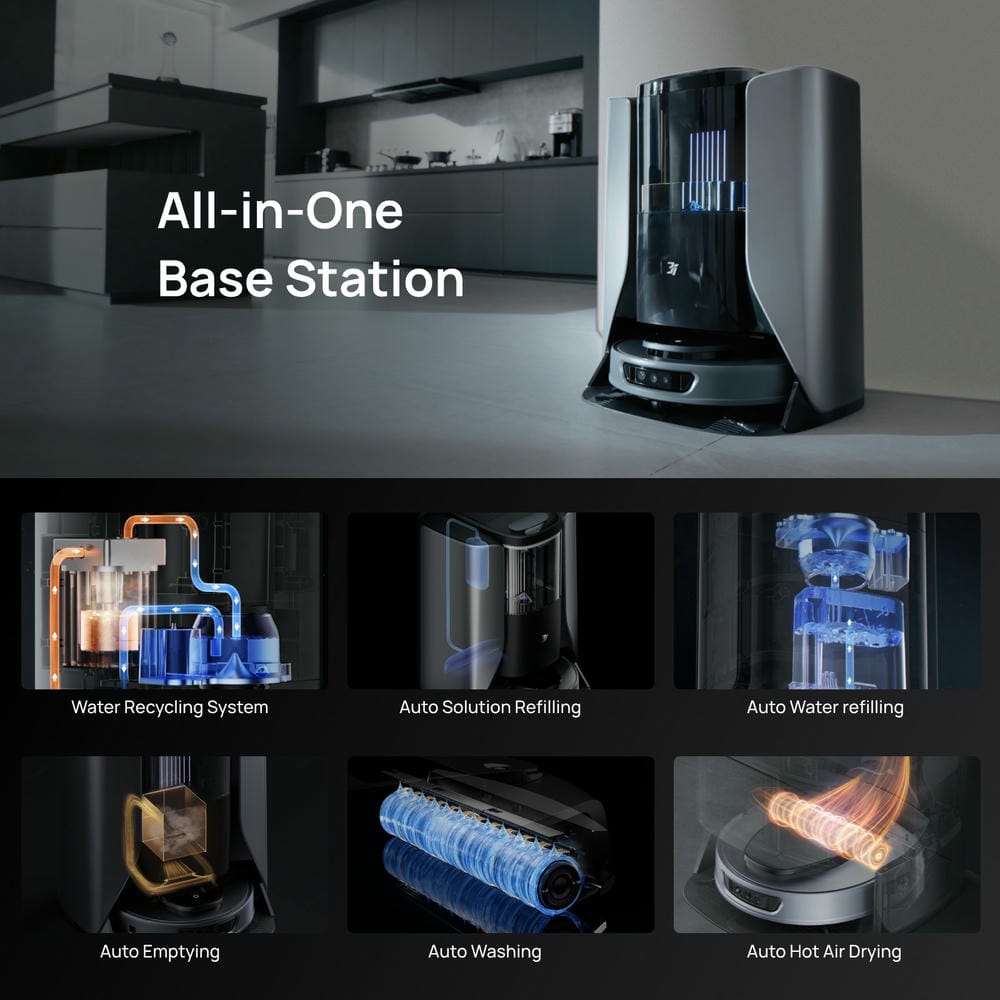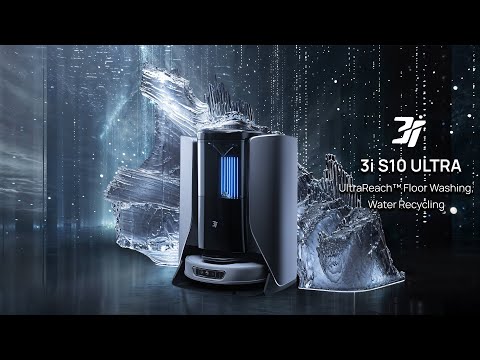Robot vacuums have transformed home cleaning by bringing hands-free vacuuming into daily life. But in recent years, the capabilities of both vacuuming and mopping have made these devices even more versatile. As mopping tech advances, one thing becomes increasingly clear: not all robot mop pads are created equal. The type of mop pads—and the technology behind it—directly affects how well your robot can handle dirt, sticky spills, and everyday messes.
In this blog, we’ll explore the three most common types of mop pads found in robot vacuums: flat mop pads, dual spin mops, and roller mop systems. We'll evaluate them based on cleaning performance, ease of maintenance, floor compatibility, and more. Finally, we’ll take a closer look at the 3i S10 Ultra, a next-generation robot vacuum with a real-time self-cleaning roller mop, showing how it's redefining mopping performance.
Flat Mops
Flat mop pads are the simplest and most widely used in robot vacuums and mops, especially in budget and mid-range models.
How It Works:
The robot drags a flat microfiber pad behind it, typically mounted under a removable mopping plate. Water from a built-in tank drips onto the pad to keep it moist while it scrubs the floor.
Pros:
Affordable: Flat mop pads are inexpensive to produce and easy to replace.
Simple design: Fewer mechanical parts mean fewer chances of failure.
Quiet operation: Since there are no moving mop components, these systems are nearly silent.
Cons:
Low pressure scrubbing: These mop pads mainly rely on the robot's weight and dragging motion, which limits their ability to remove dried stains.
Uneven moisture control: Some models soak the pad too much or too little, leading to streaking or ineffective cleaning.
No active cleaning: The pad gradually becomes dirtier as it moves, meaning it could end up spreading grime rather than removing it.
Best For:
Light daily maintenance on hard floors like wood, tile, and laminate. Not ideal for sticky spills or high-traffic zones.
Dual Spin Mops

Dual spinning mop systems use two circular pads that rotate in opposite directions, adding active scrubbing power.
How It Works:
Mounted on a rotating platform, each mop head spins while the robot moves forward. Water from the tank wets the pads evenly, and the rotating motion mimics hand-scrubbing for better cleaning.
Pros:
Improved scrubbing performance: Spinning motion helps lift dried-on stains and grime.
Even coverage: Constant rotation keeps mop pads evenly damp and in contact with the floor.
Often self-lifting: Many models lift the mop pads when crossing carpet or returning to base, preventing cross-contamination. E.g., the dual spin mops of the 3i P10 Ultra can auto-lift 0.4 inch over carpets.
Cons:
Limited edge cleaning: Round mops can miss corners and wall edges due to their circular shape.
Requires frequent washing: Although more effective than flat mops, the pads still accumulate dirt and need regular cleaning.
Best For:
Homes with frequent spills, sticky messes, or pets. These are more effective for deeper cleaning than flat pads but still need some maintenance.
Roller Mop Systems

Roller mops are the latest innovation in robot vacuum mopping. They use a rotating cylindrical mop—often powered by a dedicated motor—that scrubs the floor while rolling.
How It Works:
The roller mop rotates against the floor as the robot moves. Unlike flat or spinning mops, the roller covers a wider surface area and maintains continuous contact. High-end models such as the 3i S10 Ultra also include systems to wash the roller in real time, ensuring it stays clean throughout the mopping session.
Pros:
Superior scrubbing pressure: Rollers can apply consistent pressure across the surface, delivering better results on stubborn dirt.
Larger coverage per pass: Cylindrical design covers more ground, reducing cleaning time.
Best for liquid spills: Roller mops absorb and remove liquids more effectively than flat or spinning pads.
Cons:
Higher cost: Roller mop robots are usually found in premium models, with more advanced engineering.
Roller maintenance: While the roller cleans better, it also needs to be washed regularly unless the system includes self-cleaning features.
Best For:
Large households, families with pets or children, and users looking for a high-performance mopping solution.
3i Real-Time Self-Cleaning Roller Mop

One standout in the roller mop category is the 3i S10 Ultra, which pushes cleaning technology even further by introducing a real-time self-cleaning system for its roller mop. This smart feature ensures the mop hardly spreads dirt—it always stays clean and ready for more.
How It Works:
As the 3i S10 Ultra mops your floor, it sprays a mixture of clean water and detergent through 12 precision nozzles, evenly distributing moisture across the roller mop. While the mop rotates at 330 RPM, the system actively scrubs the floor with strong 12N downward pressure, efficiently removing sticky stains, footprints, or spilled drinks.
But the innovation doesn’t stop there. Right after the mop cleans the floor, a squeegee blade presses against the roller to remove dirty water and debris. This contaminated water is then immediately vacuumed into a separate wastewater tank, preventing any reapplication of grime.
Why It Matters:
Cleaner mop, cleaner floor: Since the mop is washed in real-time, you're always cleaning with a fresh mop—not a pad already soaked with dirt.
Great for messy spills: Whether it’s milk, coffee, or muddy paw prints, the S10 Ultra handles it without smearing.
Effortless maintenance: No need to manually wash the mop pad after every cleaning. It gets itself always clean during mopping.
Summary of Key Features:
Real-time self-cleaning roller mop
12-nozzle water and detergent spray
Squeegee and suction system for dirty water removal
Rotates at 330 RPM, 12N downward pressure
10.6-inch contact length, covering a larger area
Ideal for cleaning both solids and liquids
Final Comparison Table
|
Feature |
Flat Mop Pad |
Dual Spinning Mops |
Roller Mop of S10 Ultra |
|
Scrubbing Power |
Low |
Medium |
High |
|
Edge & Corner Reach |
Good |
Fair |
Good |
|
Water Distribution |
Basic |
Moderate |
Precision 12-nozzle spray |
|
Pad Cleanliness During Use |
Decreases |
Moderate |
Self-cleaning in real-time |
|
Maintenance Required |
High |
Medium |
Low |
|
Liquid Spill Handling |
Poor |
Moderate |
Excellent |
|
Floor Compatibility |
All hard floors |
All hard floors |
All hard floors |
|
Best Use Case |
Light daily mopping |
Medium messes |
Deep cleaning, sticky spills |
Which Mop Pad Is Right for You?
Choosing the right mop system depends on your cleaning needs and budget:
- Go with flat mop pads if you're looking for a basic robot vacuum with occasional light mopping capabilities.
- Consider dual spin mops if you deal with frequent spills, pet messes, or want better scrubbing without too much added cost.
- Invest in a roller mop system, like the 3i S10 Ultra robot vacuum and mop, if you want the most powerful, hygienic, and intelligent cleaning experience.
The best mopping robot isn’t just about what it drags across your floor—it's about how clean that mop stays while it works. And when it comes to that, the 3i S10 Ultra is in a class of its own.
FAQ
Q: Are mop pads reusable?
A: Yes. Flat, spinning, and roller mop pads are typically machine-washable and can be reused multiple times. However, for optimal hygiene and performance, it's recommended to replace them periodically—especially if you notice lingering odors or wear.
Q: Which type of mop pad is best for sticky messes like coffee or juice spills?
A: Roller mop systems, especially those with real-time self-cleaning like the 3i S10 Ultra, are best for sticky messes. They combine scrubbing pressure, continuous cleaning, and dirty water extraction to thoroughly remove residue without smearing it around.
Q: Is it worth upgrading from a flat mop robot to a roller mop system?
A: Absolutely—if deep cleaning, hygiene, and convenience matter to you. A roller mop system with self-cleaning features like the one in the 3i S10 Ultra provides significantly better performance, less manual upkeep, and superior handling of tough messes and liquid spills.
Q: What’s the maintenance like for a roller mop robot?
A: Roller mop systems generally require less frequent manual maintenance, especially when equipped with auto-cleaning features. With the S10 Ultra, maintenance is reduced even further thanks to its advanced base station, which performs deep mop cleaning after each mopping session. It also automatically replaces the mop water using WaterRecycle™ technology—eliminating the need to manually empty the wastewater tank or refill the clean water tank. This makes it significantly more hands-free than any other robot vacuum and mop on the market.




